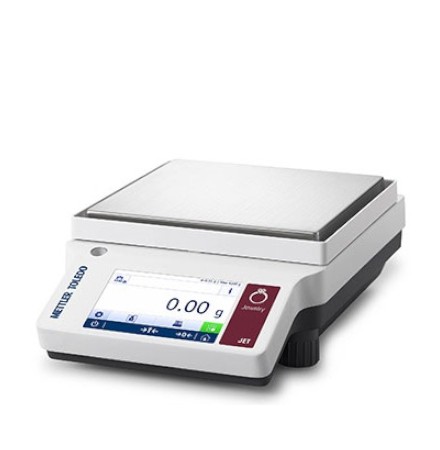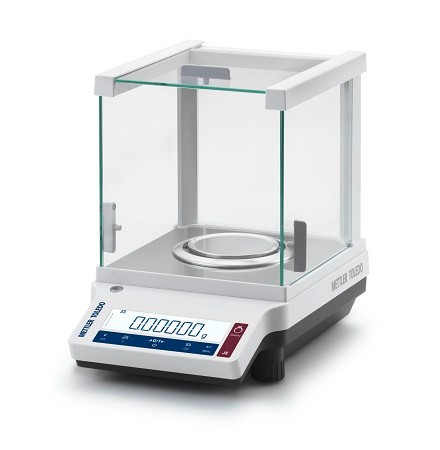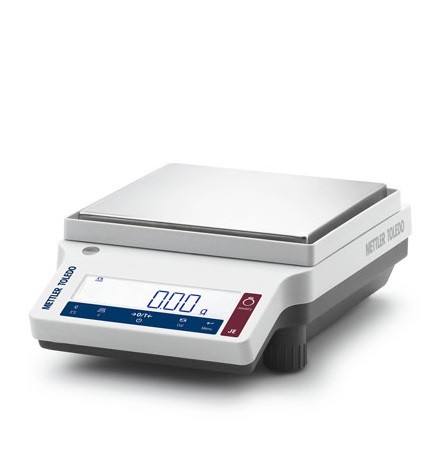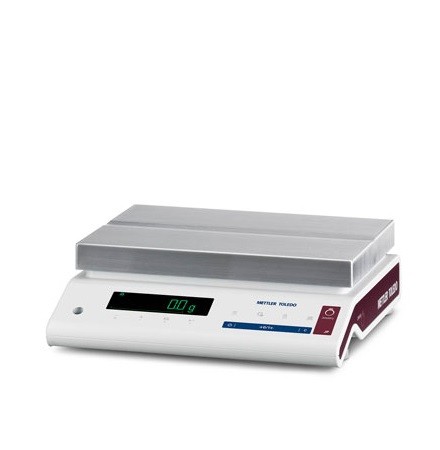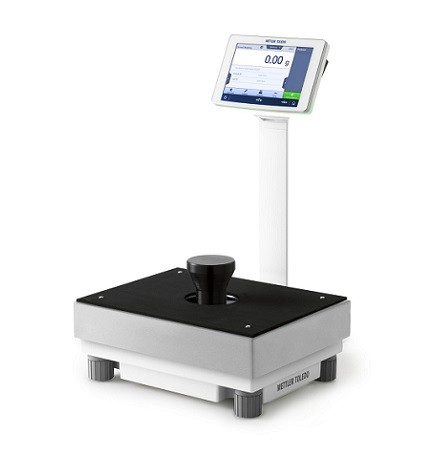Gold mining and gold ore
Prior to any mining taking place, large quantities of rock are extracted from a potential mine and thoroughly tested. The amount of gold present in the rock determines if extracting the gold ore is financially viable.
This process involves first weighing large samples of the gold ore using a high capacity balance. Small sub-samples are analyzed using refining techniques such as fire assay, which requires the use of a high accuracy analytical balance or a microbalance.
Weighing gold bullion
A high capacity gold balance or gold scale is required to weigh bullion in the form of bars or ingots. The London Bullion Market Association (LBMA) specifies that a 'Good Delivery Bar' of gold bullion should weigh 400 troy ounces, which is equivalent to 12.4 kg.
METTLER TOLEDO's high capacity XPR precision balance helps traders fulfill the requirements of LBMA's good trading practices for gold bullion. Built-in quality assurance functions assure accurate results, whilst overload protection safeguards the high-performance weighing cell. Weighing results can be saved on the balance or transferred to a PC or USB stick to ensure traceability. With the dedicated bullion weighing kit, heavy gold bars can be loaded and unloaded with ease.
Gold hallmarking
Hallmarks protect consumers from dishonest jewelry manufacturers. Such unscrupulous producers may reduce the amount of gold contained within the gold alloy used to make the jewelry or use a gold coating over a metal core (for example, tungsten is commonly used for fake gold jewelry). Such differences are hard to detect and the buyer ends up paying for more gold than he actually receives.
The gold hallmark includes the manufacturer's mark (optional), a 'Common Control Mark' that identifies the precious metal, the gold purity, and the mark of the office that provided the hallmark.
Offices providing hallmarking services test each piece of jewelry to determine the gold purity. Fire assay is a commonly used method and requires the use of a high accuracy analytical balance or a microbalance.
Gold jewelry production
In a gold jewelry manufacturing environment, balances and scales are used during the creation of the gold alloys, for measuring gold purity by density determination, and for weighing the final gold jewelry pieces. With many scales in one place, the possibility to connect the scales over an internal network simplifies documentation of results, ensures traceability, and provides cost savings through more efficient processes.
Gold jewelry wholesalers
For weighing larger quantities of gold or for bulk weighing of mass-produced gold jewelry pieces, an accurate high capacity scale is essential. Connecting a printer makes it easy to print out results, avoiding handwriting mistakes and ensuring an accurate record of transactions.
Gold jewelry retailers
Weighing gold accurately is essential to the success of all gold jewelry retailers. Customers must trust the weighing results or the retailer's reputation will be at risk. Using an extra display so customers can see the weight at the same time provides them with extra reassurance. By connecting a printer, results can be printed out, and an order ID can be included if required. The cashier uses the details on the printout when the customer is ready to pay. This simplifies the process for the jewelry retailer and the customer has the confidence of knowing that the transaction has been handled correctly. In retail applications, where a product is sold by weight, the gold weighing process must be Legal for Trade.
METTLER TOLEDO JET jewelry scales and JE jewelry scales have large displays that enable the weight results to be read clearly, even under the bright lights of a jewelry store. METTLER TOLEDO's jewelry printer simply plugs into the connection at the back of the balance. In addition, the JET and JE jewelry scale enable you to connect a printer and auxiliary display at the same.
Pawn and gold buy-back shops
Recycling old or unwanted gold jewelry helps to meet the global demand for gold. Pawn and gold buy-back shops use density determination as a first and quick indicator of gold purity. This can be achieved by installing a dedicated density kit onto the weighing pan of a jewelry scale or gold scale or by utilizing the under-the-balance weighing functionality. Here, the jewelry is suspended in a container of liquid below the balance and is a useful method for large and substantial pieces. METTLER TOLEDO JET gold scales and JE gold scales feature a dedicated hook on the base for this purpose.






